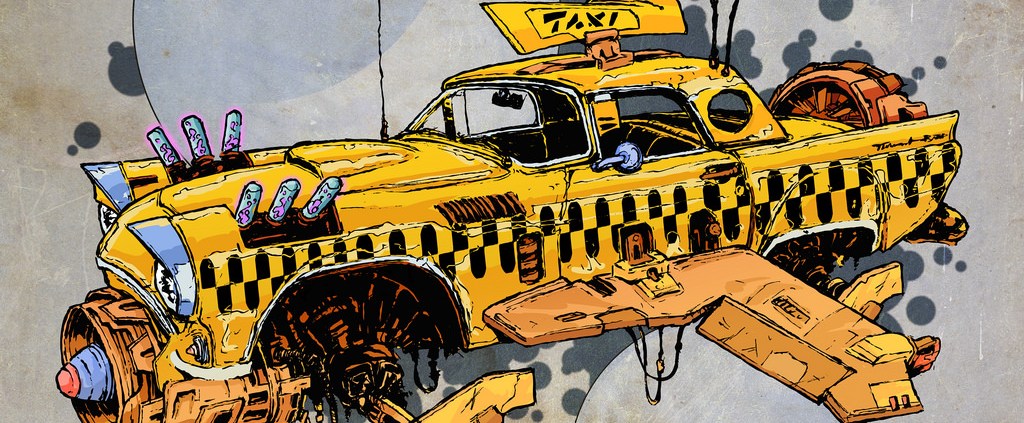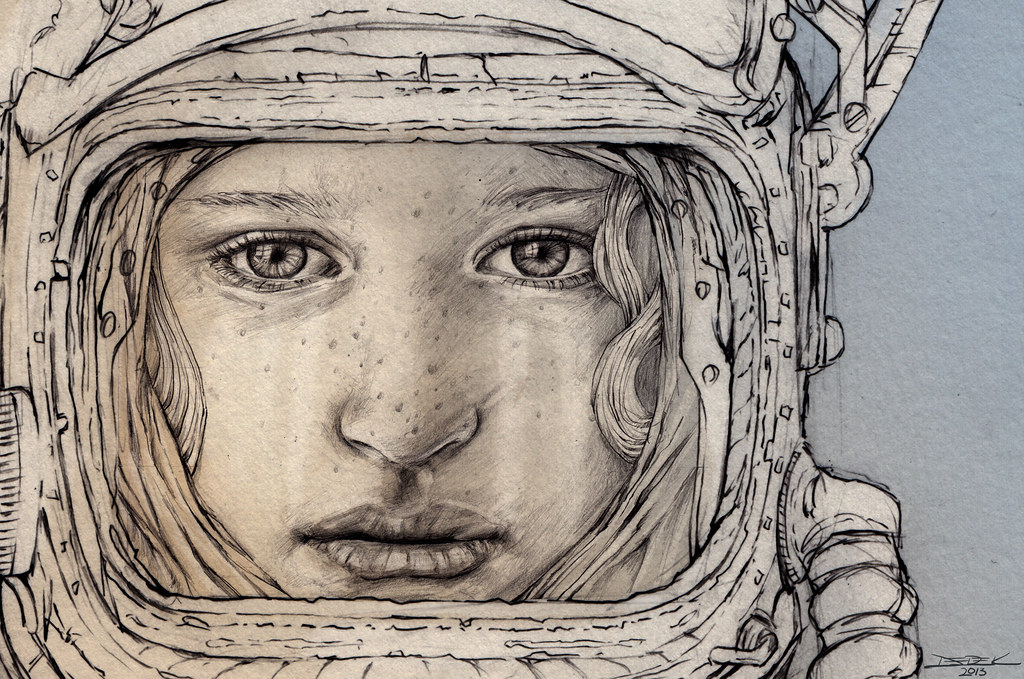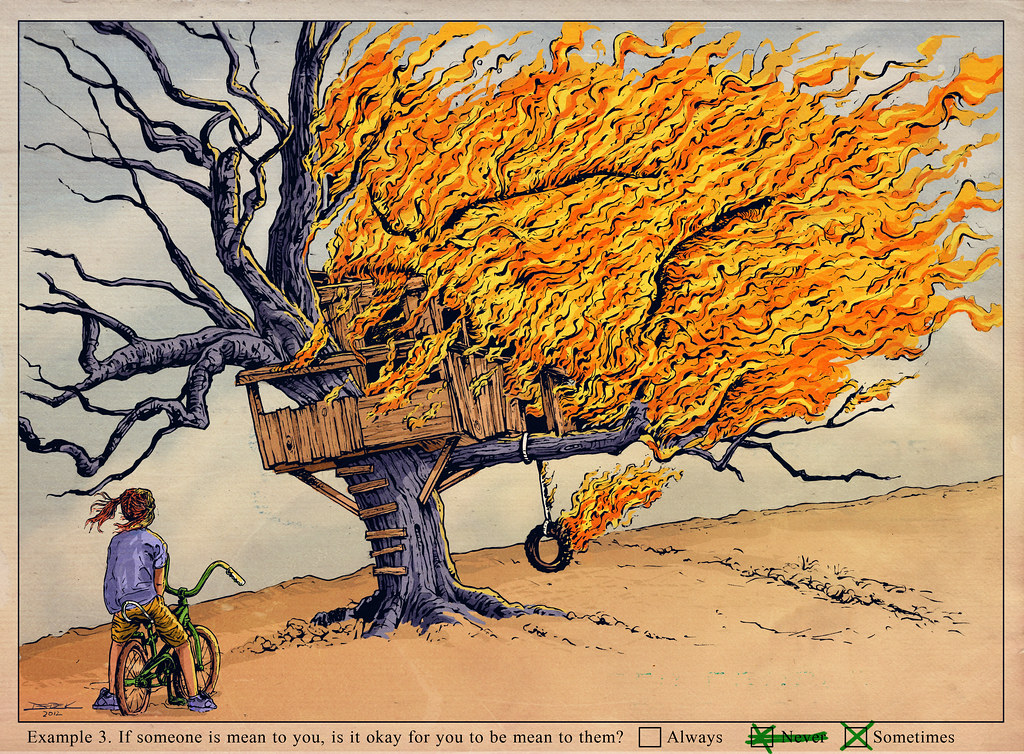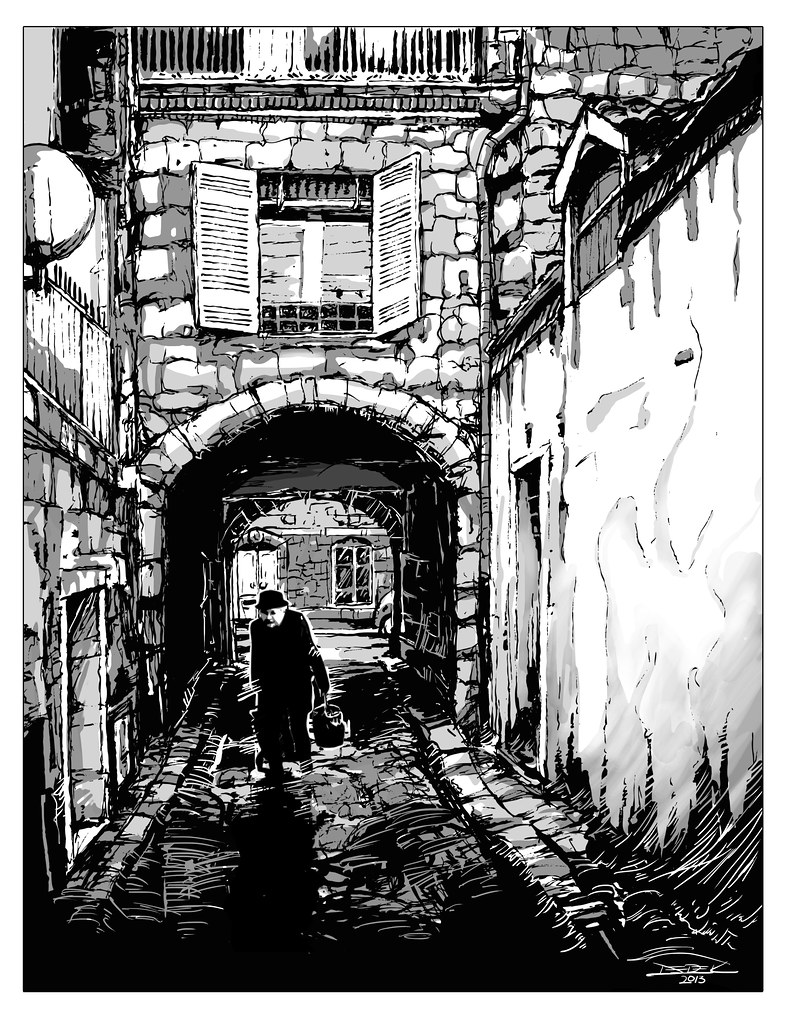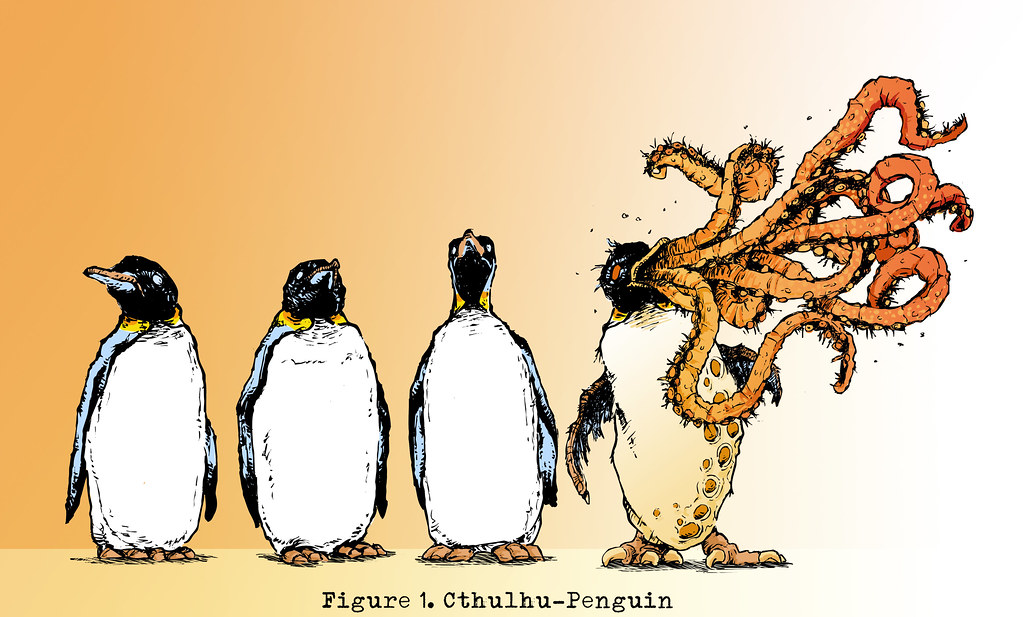For as long as we can remember, the art of Derek Chatwood, better known as The Searcher, accompanied us here at Flickr. He's been regularly wowing us with his illustrations, and his rainbow-vomiting Panda's even made it onto our walls at FlickrHQ as well as into - or rather around - our Christmas presents a few years ago.
This is why it's time to put The Searcher, an illustrator and game designer from Seattle, into the spotlight!
What did get you started on drawing and for how long have you been doing it?
I don’t remember ever getting started, I was just always drawing. I’m sure comic-books played a big role, I was reading those since before I can remember too. Most of my early drawings, from when I was maybe five years old, were of Hulk, Iron Man, Batman, etc. Hulk, I recall, had some serious flatulence issues.
What fascinates you about drawing?
It’s pure creation. There’s no set of complex tools, preparation, messy paints, or digital interface between me and the image. It’s a pencil (or pen), and a blank sheet of paper. Every new drawing is just me, the pencil, and the potential.
Is there a medium you prefer or are you open for all kinds of fine arts?
I do enjoy using a variety of media, especially acrylic paints and polymer clay sculpture. But my focus has always been with pencil and pen. I tend to work small (part preference and part necessity) so the simple sharp point of a pen or pencil just gets the job done for me best.
How would you describe your work and your style?
Pretty random, I’m all over the place. I seem to have a problem sticking to a single subject or theme, so the style tends to jump around depending on the imagery. Even when I do find a theme I like (such as say Vomiting Rainbow Pandas, or Flying Sharks) I tend to only revisit them once a year or so. I think that’s why my art never really worked for gallery exhibition; there’s no narrative thread that connects any of it. Since I tend to do line art, the style usually goes towards a sort of pop art/comic-book look. But I bounce around between that and more naturalistic/realistic works.
Do you usually work digitally or old-school and then scan the results, or is it a combination of both?
I start everything analog, pen and pencil on paper. Sometimes the piece is complete on the page, and all I have to do is scan and clean up. Other times it’s just a foundation for digital painting. But eventually everything gets into the computer, so digital manipulation is involved to some degree no matter what.
Can you share some how-to with us, or give some more detail about your workflow?
I usually draw on 9×12 or 11×14 bristol. I use mechanical pencils with small .3mm leads, to maximize detail on the page. For pens I use Micron Pigmas, often the smallest size, .005. A crucial constraint: the drawing has to be completed by the end of the weekend. So I can’t devise anything so complex that it would take longer than say ten hours to complete. It’s a limit that forces me to maintain discipline and not get too ambitious with my ideas. Otherwise they’d never get done. Basically I’m racing my own inevitable disinterest in what I’m doing.
I scan the finished drawing at 300-400 pixels per inch, and it’s Photoshop for the rest. My standard technique is “underpainting”: by setting the drawing layer to “multiply”, the white paper vanishes and only the black line is visible. I can paint as many layers of color underneath and the line will stay on top unmarked. After that it’s pretty straight-forward, default round brushes, different opacity levels, and that’s it. For way more detail on the tools and gear I use, check out my profile at the awesome gear/tool blog usesthis.com.
As for the story, in most cases it starts with the finished artwork. Sometimes I have a rough idea of a story when I start, most most often I use the finished art as the exercise to develop a short narrative. This also serves as a way for me to keep the stories short and on point, as I now have a finished piece of artwork that wants to be set free upon the world, but I can’t let it go until the story’s done too. “Pressure” and “discipline” are often interchangeable.
What is the best thing about Flickr?
It’s ability to share the page with images and text. So many “photo blogs” or photo galleries are focused on the image, with too few giving any room to the descriptive elements around and about the image. Perhaps it’s my comic-book roots, but images have always been just part of the storytelling whole for me. So finding a site that lets me combine drawing and writing is pretty useful. Now if you’d just let me pick some more interesting fonts and page layouts, we’d win the internet!
When did you first hear about the site and what made you make it the home for your work?
I think I started using Flickr in 2005 or so. I had used a variety of self-administered web sites and blogs over the years, but they all required regular maintenance and updates on my part. And most crucially, the only audience would be the one I gathered, there was no built-in community. I’m terrible at self-promotion, so a site that would let me quickly display art and text with simple upload tools, and instantly display it to hundreds/thousands of followers, was very appealing to me.
Which other Flickr members and/or Flickr groups influence you most?
Probably too many to mention. In general I think it’s the Flickr members that are active in the Flickr community that influence me the most. These are the people that post their images to many different groups, who have thousands of constantly updated favorites, and who follow and are followed by many other creative people. When I find interesting imagery the first thing I’m interested in is seeing what those people are interested in. That often leads to an interconnected series of rabbit holes between talented people and creative works.
What is your 1 favorite photo from your own photostream and why?
I’m going to split this up, and pick an image and a story. For image I would say it would be Jesus Riding a Dinosaur. I mean it’s a terrible drawing, I never liked how it came out. But it took off on the internet in a way none of my work has done before or since (it was my first “meme”.) It’s on blogs, tshirts, concert posters, graffitied on back alleys, and tattooed on random people around the world! And since it escaped to the internet, naturally I never made a cent off of it. But when I can walk around a small town in France and bump into someone wearing that t-shirt, money doesn’t really matter.
For story, it’s always been “The Death’s Were Unexpected.” I’ve received many messages over the years from people who have suffered loss, and expressing how emotional yet cathartic the story was for them. I don’t know if it works for anyone else, but it always hit me in the feels.
If there was one secret to drawing (or art in general) you could share with the Flickrverse, what would that be?
Practice. That’s it. Do your art, and do it all the time. As much as you can. Even when you suck at it, even when it’s the last thing you want to do. Especially when it’s the last thing you want to do.
In 5 years I’ll …
In 5 years I’ll be freaking out late on a Friday afternoon, desperately trying to think of something to draw for the weekend.
Apart from your photostream here on Flickr, is there another place where we can see more of your work?
I have a blog, constantly out of date, PopRelics.com. I came up with the domain name years ago, like early internet days, but it’s somehow still very descriptive of my artistic randomness. I tend to cull from the pop cultural chaos and pull in the pieces I need to make something new.
Thanks, Derek, for taking the time to join our Photographer Spotlight!
